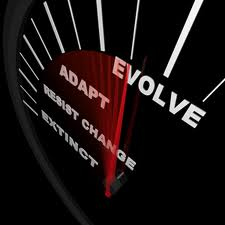Is your brand at risk of Digital Darwinism?
Digital analyst and futurist Brian Solis, a principal at Altimeter Group, who recently conversed with our UCLA digital class, defines Digital Darwinism as “the evolution of consumer behavior when society & technology evolve faster than your ability to adapt.” As a result, you must adapt or die!
It is a cautionary tale.
There has always been change, but in today’s world, the rate of change has changed becoming lightening fast, non-linear and three dimensional. Companies holding on to the status quo or trying to defend their incumbency will face this Darwinian extinction swiftly and rapidly. Formidable brands like Borders, Myspace, CircuitCity, Tower Records, Research in Motion, American Apparel, Palm, Avon, Pacific Sunwear and Hostess are examples who have suffered this fate or are at risk of losing their relevancy.
- The new digital frontier has incited a consumer revolution forever changing how audiences connect and experience brands. It means that brand purveyors must surpass old expectations and become revolutionaries, not just “evolutionaries.”
- Solis offered these future business graduates 10 trends to stave off Digital Darwinism. A failure to understand the impact of these will mean you have a date with the 21 Century Grim Reaper:
- Social Networks from Facebook to Twitter to Google+ and how they’re connecting to influencers and businesses
- Geolocation check-in services such as Foursquare and Facebook location updates to share locations and earn rewards or opportunities for discounts
- Crowdsourced discounts and deals including Groupon and LivingSocial and what’s valued and why
- Social commerce services like Shopkick and Armadealo and how they create personalized experiences that are worth sharing
- Referral based solutions like Yelp, Service Magic, and Angie’s List to make informed decisions and how shared experiences can improve your business, products, and services
- Gamification platforms such as Badgeville and Fangager, and why rewarding engagement improves commerce and loyalty
- How your consumers using mobile devices today and what apps they’re installing. Also, how they’re comparing options, reviewing experiences and making decisions while mobile? The online presence your business produces across a variety of platforms such as tablets, smartphones, laptops and desktops. You must realize how consumers are experiencing the online presences you create and whether or not they deliver a holistic and optimized experience for each platform.
- The consumer clickpath based on the platform consumers are using. Are you steering experiences based on the expectations of your customers? And are you taking into consideration the device or network where the clickpath begins and ends? Are you integrating Facebook F-commerce and m-commerce into the journey?
- The expectations of connected consumers, what they value in each channel and platform, where they engage and how your business can improve experiences and make them worthy of sharing.


